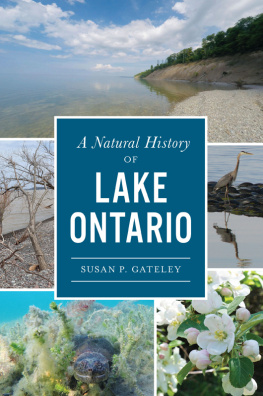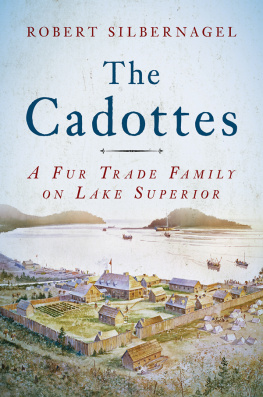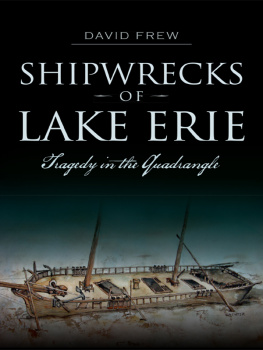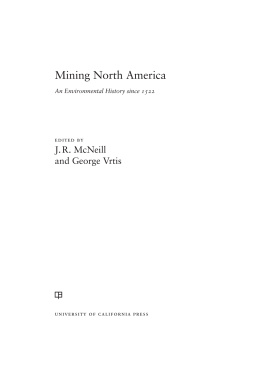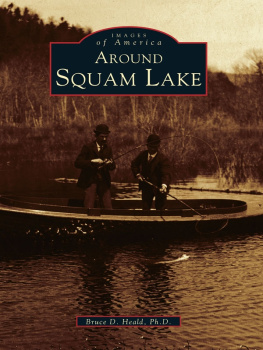Sustaining Lake Superior
Sustaining Lake Superior
An Extraordinary Lake in a Changing World
Nancy Langston
Yale
UNIVERSITY PRESS
New Haven & London
Published with assistance from the foundation established in memory of Calvin Chapin of the Class of 1788, Yale College.
Copyright 2017 by Nancy Langston.
All rights reserved.
This book may not be reproduced, in whole or in part, including illustrations, in any form (beyond that copying permitted by Sections 107 and 108 of the U.S. Copyright Law and except by reviewers for the public press), without written permission from the publishers.
Yale University Press books may be purchased in quantity for educational, business, or promotional use. For information, please e-mail (U.K. office).
Set in Monotype Bulmer by Newgen North America.
Printed in the United States of America.
Library of Congress Control Number: 2017933629
ISBN 978-0-300-21298-3 (hardcover : alk. paper)
A catalogue record for this book is available from the British Library.
This paper meets the requirements of ANSI/NISO Z39.48-1992 (Permanence of Paper).
10 9 8 7 6 5 4 3 2 1
Contents
Preface
WHILE IM SITTING ON THE cliff over Lake Superior drinking my morning coffee, a pileated woodpecker comes for a visit. The bald eagles nesting nearby perch on an iceberg drifting down from the winters ice pack. One eagle lifts off and dives for a lake trout, and a swarm of ring-billed gulls shrieks and mobs her, trying to drive her away from a gull colony thats expanding along the cliffs. Eight young loons paddle by, practicing their calls. Last spring, my neighbors were arguing over whether that was really a mountain lion they saw the other night (doubtful). Sometimes Im lucky enough to hear the howls of the wolves that are now denning in the county forest across the road. Bears are so abundant that they have become a pest.
Forty years ago, few people figured any of these critters had a chance up here. Deforestation and failed farming had destroyed the habitat of many birds and mammals, and the erosion that followed clogged tributaries and estuaries with pollutants and sediments, devastating fisheries. Following World War II, industrial production had boomed across the globe. Mines and pulp mills along the shore of Lake Superior had dumped their toxic waste into local waters. Distant industries had released toxic chemicals that had moved from their sites of production and consumption into Lake Superior, making their way into fish and then human bodies. By the 1960s, the lake was at a tipping point, with the possibility of irreversible pollution.
Much to everyones surprise, Lake Superior has witnessed significant recoveries in my generation. Forests and many of their inhabitants have returned after the devastation of the lumber era. The toxic waste sites left after the paper and mining booms have been partially cleaned up. Lake troutonce nearly extinctspawn abundantly in the lake once more, one of conservations great success stories.
None of these recoveries is complete, to be sure. The new forests are very different from the forests that were logged so quickly, and invasive species threaten aquatic ecosystems. Local women still wrestle with concerns over how much lake trout it is safe to eat when theyre pregnant. New mining developments threaten to slice off entire mountainsides. Above all, global warming is now changing Lake Superior more rapidly than almost anywhere else on earth, remobilizing contaminants that communities thought had vanished.
Sustaining Lake Superior asks, What can we learn from the conservation recoveries of Lake Superior over the past century as we face new challenges of persistent pollutants that are mobilizing with climate change? Communities around Lake Superior have long struggled to address pollution concerns, and local, regional, and international efforts met with significant successes in the twentieth century. The nature of pollutants has changed since World War II, but, nevertheless, exploring the successand failuresof pollution control in the past can help us devise resilient strategies for facing the challenges of pollution in a globalized, warming world.
The largest lake in the world (by surface area), Lake Superior contains 12 percent of the worlds freshwater, a resource of enormous importance for a world where the supply of clean, drinkable water is increasingly vulnerable. This single lake is big enough to swallow all the other Great Lakes with a couple of additional Lake Eries tossed in. Vast enough to create its own storm systems, it births rogue waves taller than the buildings along its shores. Nearly every year another kayaker or two dies of hypothermia after a capsize, lulled into complacency by the lovely scenery. The cold in the winter stops you in your tracks and the wind can knock you down. The deepest trenches in the lake have never been explored. Gordon Lightfoots The Wreck of the Edmund Fitzgerald wasnt just a lilting folk songit was a warning.
Lake Superior presents an interesting challenge for people fighting pollution. Environmentalists often portray it as remote, wild, and pristine, suggesting those attributes make it worth special protection. But this leads to a dilemma: if its so clean, why worry about a few toxics? On the other hand, if you stress its contamination to win support for environmental protections, then the lake loses its special status, so why bother focusing on it? Environmentalists finesse this dilemma by arguing that Lake Superiors particular geographic contextit is huge, northern, extremely cold, and distant from industrial developmentsmeans that it is still the least spoiled of all the Great Lakes, retaining much of its wildness and splendor. Yet the very characteristics that have made Lake Superior less dirty from conventional pollutants, such as sewage and industrial waste, actually make it more vulnerable to the persistent toxic contaminants that have mobilized across the globe since World War II.
Fewer local sources of contaminants no longer mean better water quality when pollutants are increasingly mobile. Because Lake Superior is so huge and has only one outlet, it has a retention time of nearly two centuries. This means that a drop of water stays in the lake for, on average, 191 yearsand contaminants can as well. Lake Superior is extremely cold, with an average annual temperature of 39F. The cold water and the abundant winter ice cover lead to relatively low evaporation. So when toxics carried by atmospheric currents from Africa, Asia, and the lower Great Lakes find their way into Lake Superior, they tend to stick around. Lake Superior, like other cold northern lakes, has become a sink for the worlds most distant and toxic contaminants. Toxics long banned in North America arrive windblown from distant places. Toxics from the past lie buried in sediments, stirred up into the water column by storms and bottom-feeding creatures. Pollutants in the lake blur the boundaries of space and time.
Pollutionand concerns about that pollutionhave a complex history in the Great Lakes. As soon as industrial development burgeoned in the region during the nineteenth century, people began trying to comprehend and control industrial wastes. I argue in Sustaining Lake Superior that some of the earliest efforts to control pollution worked surprisingly well, for they rested on understandings of natural resiliency that made a great deal of sense at the timeand still have much to teach us. Two ideas were key. The first core idea was dilution is the solution to pollution, or the belief that toxics do little harm if they are sufficiently diluted. The second key idea was assimilative capacity, which refers to the ability of ecosystems to absorb and break down pollutants. While some scholars have derided these concepts as mere apologies for industrial development, I argue that they actually encompassed understandings of natural resiliency. They assumed that human activities were part of larger natural processes, and so damage from those activities could be healed by natural processes as well.
Next page

